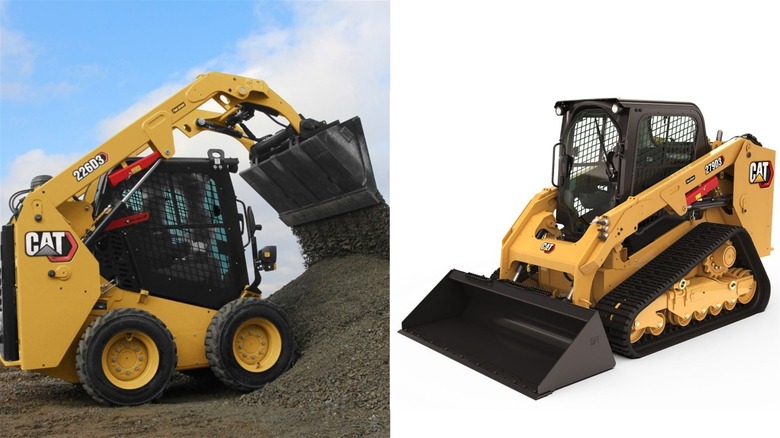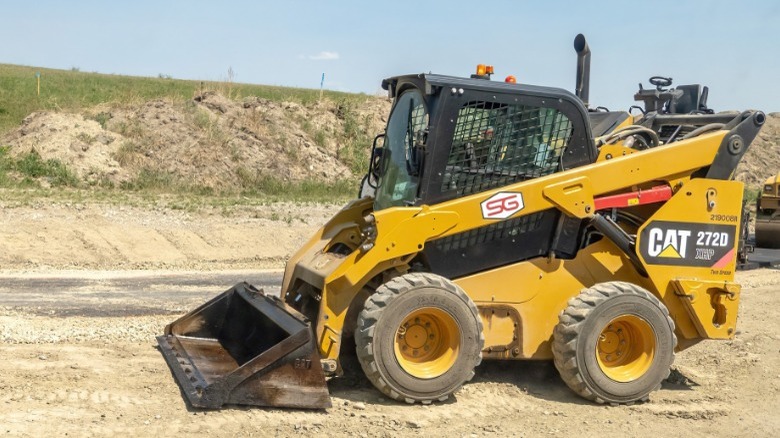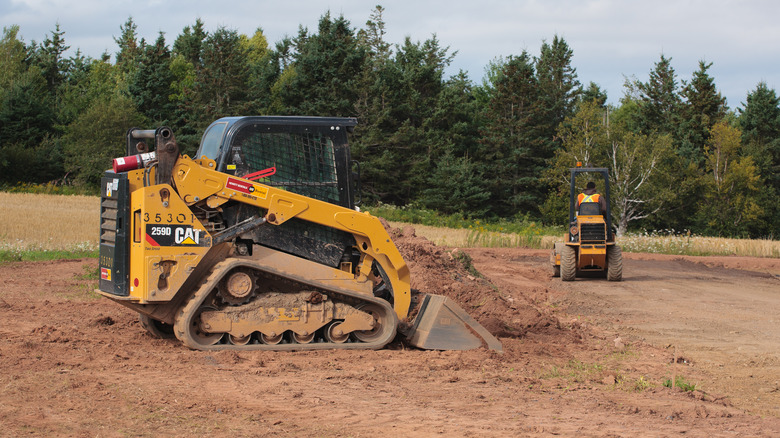Caterpillar Skid Steers Vs Compact Track Loaders – What's The Difference?
If you work in an industry such as landscaping, road construction, or demolition, your tasks go well beyond the capabilities of a shovel or sledgehammer. When tough tasks require the extra oomph of machinery, a few of the common choices are skid steers and compact track loaders from Caterpillar, the same company that's been in the news recently for a viral but fake image of its branded pickup. According to Fact.MR.com, global skid steers are expected to reach a market value of $3.04 billion by 2033. Since these two vehicles are close in size and perform a lot of the same duties, what features set these rugged workhorses apart? The main differences come down to wheels, weight, and cost.
Skid steers roll around on four knobby tires, whereas a compact track loader features rubber tracks, making it appear more like a small tank. Wheels are lighter in weight than tracks, making transportation to a job site easier with a skid steer. In terms of price, skid steers are often less expensive than track loaders for projects with a leaner budget. Skid steer and compact track loaders are on the smaller size of heavy industry equipment in comparison with other Caterpillar machinery, like the C175-20 mining truck — one of the best examples of the world's biggest engines that are truly massive.
Wheels vs. tracks
There are advantages and disadvantages to both a four-wheel design and large tracks. The skid steer equipped with wheels can cruise at higher speed on hard level surfaces and can change direction more quickly than that of the track loader. With greater speed and maneuverability, the skid steer offers work crews enhanced adaptability to a variety of tasks, even in tight areas where a track loader would struggle to operate as effectively.
The compact track loader's lack of wheels is a significant benefit in the right circumstances. For example, if the job site features hilly and varied terrain, tracks outperform wheels. The compact track loader distributes its weight across a larger area, so it won't succumb as easily to losing traction or get stuck in soft terrain like sand or mud. It's for these reasons that the compact track loader would be a better choice for applications like forestry, quarries, and waste management.
Compact track loaders are heavier and more expensive
In comparing Caterpillar's line of skid steer's and track loaders, it becomes evident that one tips the scales far more than the other. For example, the Cat 285 XE Compact Track Loader weighs in at a hefty 13,669 pounds. The Cat 270 XE Skid Steer on the other hand, comes in at 10,847 pounds, with a difference of almost 3,000 pounds. But why is weight an influential factor between the two vehicles? The extra weight of a track loader makes it more expensive and challenging to transport. And, since many track loaders are a bit larger than most skid steers, you'll need a more substantial trailer to accommodate it.
Regarding purchase price, Caterpillar skid steers are more affordable than its compact track loaders. For example, a 2024 242D3 Skid Steer goes for around $61,400, not including any additional attachments. A 2024 239D3 Track Loader is around $84,092. Costs aside, it's really the type of job and the conditions that determine which vehicle is required. While saving money is always welcome, and the skid steer is an effective all-around tool, there are scenarios where using a compact track loader could benefit both the safety and productivity of workers on the job.


